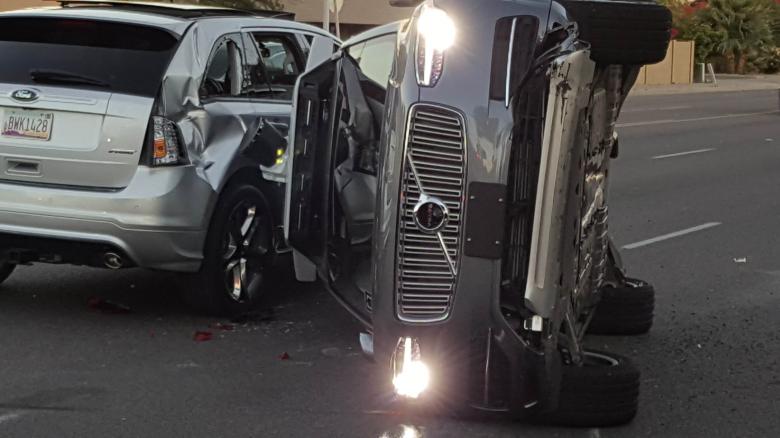Uber Technologies Inc. halts its self-driving car program after one of its autonomous vehicles crashed on an Arizona roadway on Saturday.
The accident took place in Tempe, when the driver of a second vehicle made a turn and “failed to yield” to the self-driving Uber vehicle. The autonomous vehicle flipped on its side but there were no serious injuries.
Sgt. Josie Montenegro of Tempe Police has stated that Uber vehicle was not responsible for the crash, there was a person behind the wheel and it is uncertain at this time if they were controlling the vehicle at the time of the collision.
#UPDATE: No injuries yet reported in an accident involving a self-driving #uber, captured by @fresconews user Mark Beach in Tempe, AZ. pic.twitter.com/kmizvRD5WP
— Fresco News (@fresconews) March 25, 2017
Uber has given a statement that they are suspending the self-driving car program until at a thorough investigation for the incident has been conducted.
BREAKING: Self-driving Uber vehicle on it’s side after a collision in Tempe, AZ.
Photos by @fresconews user Mark Beach pic.twitter.com/5NCF2KG0rW
— Fresco News (@fresconews) March 25, 2017
Uber started testing it’s nascent self-driving technology in 2016, in Pittsburgh. The company stated that these autonomous vehicles would need human intervention in many conditions such as bad weather and also stated that the new self-driving technology has the potential to reduce the number of traffic accidents in the country.
However, a report published in March suggested otherwise as it stated that the vehicles are falling below the company’s expectations.
This is certainly not the first time when a self-driving vehicle got crashed, earlier, in 2016, a driver of Tesla Motors Inc Model S car was killed in a crash while operating the vehicle in autopilot mode, in Florida. Another collision happened in California when a self-driving car operated by Alphabet Inc’s Google crashed and strike bus.
Although, these cars have been tested to accumulate 5,000 miles in January and in February that number rose to 18,000 miles but the reports suggest that a self-driving car needs a human driver to take over at least once per mile.


